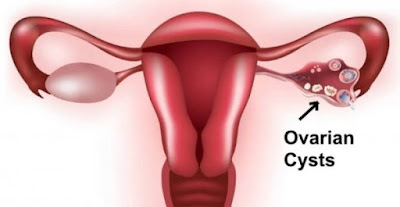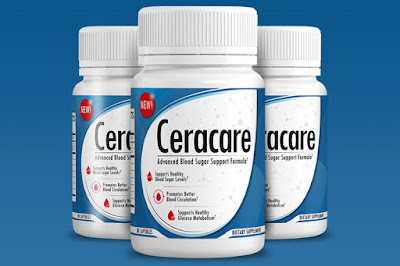Diabetes is a condition featuring unusually high levels of glucose in the bloodstream. Insulin, produced by the pancreas, is used by the body to lower blood glucose levels. If someone’s pancreas doesn’t generate enough insulin, their body will develop diabetes.A short list of symptoms of diabetes would include severe hunger and thirst, more urge to urinate, and fatigue. But the surest way of knowing whether you have diabetes is having a blood sugar test, also known as a Glucose Tolerance Test.
Type 1 diabetes is the more acute form. It is typically treated with special dietary restrictions, exercise and occasionally with insulin. Type 1 diabetes usually will be treated with special diet, exercise, and a weight loss plan before insulin is added. This form of diabetes is considered an insulin dependent disease.
A less severe form of diabetes, Type 2 diabetes is first treated with a diabetic diet,
exercise and weight loss. If theses measures are not successful in controlling blood sugar and insulin levels, oral medications may be added. Insulin is then finally considered if these also are unsuccessful. Type 2 diabetes normally occurs in adults who are middle age or older, which is why it is sometimes called Late-Onset Diabetes In this case, he pancreas still produces the right levels of insulin but the body has become resistant to it.
It is feasible to delay the onset of Type 2 diabetes if it runs in the family. Through losing weight, getting the right amount of exercise and controlling your diet, you can manage. If Type 2 diabetes is not treated, eventually the same complications may ensue as those seen with Type 1 diabetes.
Gestational diabetes is seen in pregnant women. Normally it disappears after the birth of the baby, however, treatment for the mother to stabilize the blood glucose levels will decrease the chance of complications to the baby as well as mother.
Juvenile Onset diabetes is another major form of diabetes that affects many children. It is believed to be the onset of Type 1 diabetes. If a child is showing even a few of the symptoms of diabetes, it’s vital that they be checked by a doctor. It is estimated that over two million adolescents are in the pre-diabetes stage. This is mostly due to being overweight. In this condition, blood glucose levels are high but not high enough to be considered diabetes. Teens usually develop this between the ages of 12 and 19.
There are two types of diabetes, which consists of Type I and Type II. It is important to understand the distinction between the two and how both are treated.
Type 1 diabetes is commonly found in children and/or adolescents, but may also occur in adults. With type 1 diabetes, there is almost always a complete deficiency of insulin. As a result, the most common treatment is insulin injections, a lifestyle that consists of both diet and exercise and regular monitoring of blood glucose levels with the use of blood testing monitors. Patients who have been diagnosed with type 1 diabetes can continue to enjoy a normal life providing they continue with their treatment and take special care to follow their doctor’s instructions and/or recommendation.
With type 2 diabetes, an individual’s insulin level is usually either normal or sometimes even elevated, but is not deficient. This form of diabetes is believed to be more complicated than type 1, but ironically is thought to be easier to treat. Because insulin is still being produced inside the body, type 2 diabetes often goes undetected for years. Symptoms are milder and may even be sporadic, which often reduces the level of concern. The main problem with type 2 diabetes going unnoticed is the potential for serious complications, including renal failure and coronary artery disease. The initial treatment phase of type 2 diabetes will likely include a lifestyle adjustment to feature increased physical activity and a diet that is geared toward weight loss. The next step, if necessary, will be medication and possibly insulin therapy if needed.
Both types of diabetes require that the patient maintain normal blood glucose levels in an effort to reduce the possibility of organ damage, including eyesight, kidney, blood circulation, etc. In order for this to occur, patients must carefully monitor their food intake and make sure to participate in regular exercise, all the while continuing to monitor their blood glucose level.
As of 2006, there is no known cure for diabetes. A chronic disease that effects many, diabetes is best treated through patient education, nutrition, self awareness and long-term care. In addition, patients are often urged to be aware of other symptoms that may indicate complications arising from diabetes.
The “rules” that I would lay down are as follows:
1. Cut back on snacks and then change the type of snacks you eat.
Certainly my biggest downfall although it wasn’t really apparent to me. When I first started at University, I had little or no routine which meant that filling my day was difficult and popping into the kitchen for a snack, no matter how healthy it felt, was a regular occurence. This is one of the hardest things to do for some people, but establishing a great routine is essential to great diabetes care. The types of snacks to be eating are unsalted nuts, dried unsweetened fruit, fresh fruit, fresh vegetables (I love fresh red pepper and cucumber), dark chocolate (richer and nicer and you only want 2 squares usually).
2. Cut back on white flour and embrace wholemeal carbs.
This is the most essential part of your diet, and the thing that can show the biggest increase in loss of weight. Some diets in fact jsut focus on this point, and are very successful. Wholemeal (especially stoneground wholemeal) is so good for you and has so much more flavour in it that switching is much easier than you think. Most people are really surprised at the ranges you can get in you supermarket, again remember that the bread that is best for you is the one that is freshest with least perservatives or added ingredients. Also, brown or basmati rice is great with a lovely nutty texture. Wholemeal pasta is great and for your potatoes I would totally recommend the smaller new potatoes.
3. Stop drinking cocktails, start drinking wine.
Cocktails are full of sugar, colourants and preservatives. As a student I have had loads of practice at going out and not drinking cocktails, so my drink of choice is Malibu and Diet Coke if I feel I have to drink something and I make it last all night. I can then top up with Diet Coke (which has almost no sugar in it) and it looks as though I am drinking Malibu, who is to know. If you are out at a restaurant, red wine is much better than anything else you can order, (except water of course!) and it has been proven that the anti-oxidants in red wine are great for keeping a healthy heart. The recommended amount is one glass a day with your evening meal.
4. Start cooking more fruit and vegetables.
Fresh fruit and vegetables are a great way to get all the vitamins and minerals you need. And there are so many different ways in which to cook vegetables, but I find that raw is the best followed closely by steamed. Both of these ways preserve all their natural goodness as well. I will follow this post with another diabetes recipes post.
5. Drink more water.
I know you have heard people say this many times before, but the benefits of drinking more water are endless. A few tips on how to get more water into your day are firstly to put bottles of water at all the places you go in the house or work. So keep one in your desk, on your desk, a glass in the kitchen, the bedroom, the sitting room, etc. Try and drink all these glasses up and you will be well on your way to 8 glasses a day. The trick is to add a glass every few days or so, if you try to drink all that water in one go you won’t be so inclined to drink 8 glasses again, trust me! Have a go, it’s amazing how great you will feel.
In 1550 BC, the famous Ebers Papyrus advised treating diabetes with high fiber wheat grains. Not much has changed since then. Plant foods are the drug of choice for treating diabetes. There are large numbers of scientific research findings to confirm the effectiveness of plant foods in managing this disease. Through the centuries, more than 400 plants have been identified, used, and prescribed as diabetic remedies.
Raw onions and garlic have been long been favorite anti-diabetic drugs in Europe, Asia and the Middle East. The vegetable bitter gourd and the herb ginseng have been widely used for treating diabetes since the ancient time in India and China. Common mushroom is widely used in parts of Europe to lower blood sugar. Barely bread is a popular treatment for diabetes in Iraq. Other foods, used in different countries, in the treatment of diabetes include beans, cabbage, cinnamon, coriander seeds, cucumber, fenugreek seeds, Indian gooseberry and lettuce.
All these foods have anti-diabetic properties. Scientific research has confirmed that most of these foods, or their compounds, either lower blood sugar, or stimulate insulin production. Some of the more important foods that help to lower blood sugar or stimulate insulin production in diabetes patients are discussed here.
Artichoke is a tuberous root with a top like a sunflower. This vegetable contains good amounts of potassium, a fair amount of calcium and some iron and sulphur, all of which are needed by the body for maintaining good health.
Artichoke is beneficial in the treatment of diabetes because of its high insulin content. A fully ripe artichoke is said to contain more than two percent of insulin. Ripe artichokes are generally available only during autumn or fall. The insulin is converted into sugar in winter. Artichokes are most effective when eaten raw in salads. It cooking is required; they should be boiled, unpeeled, in a small quantity of water for about 10 minutes. Artichokes can be effectively combined with other vegetables.
Today, there are at least 20 million people living with diabetes in America and the sad part is that it is possible to prevent and heal pre-diabetes and diabetes type 2 naturally with balanced nutrition, and basic exercise.
People at risk of getting the disease drop by a staggering 60 percent if they manage to lose just 10 pounds by following a healthy diet and engage in regular exercise such as walking, according to a report published in the New England Journal of Medicine. (May 3, 2001).
Pre-diabetes
This term means that you are at risk for getting type 2 diabetes and also heart disease.
The good news is if you have pre-diabetes you can reduce the risk of getting diabetes type 2 and even return to normal blood glucose levels if you follow the guidelines in this article.
Type 2 diabetes
Formerly called adult-onset diabetes, this is the most common form of diabetes. This form of diabetes usually begins with insulin resistance, a condition in which the body cannot use insulin properly. People can develop this type of diabetes at any age and is usually associated with today’s modern lifestyle of fast food, stress and no exercise.
Being overweight and inactive increases the chances of developing type 2 diabetes dramatically. Traditional treatment includes taking diabetes medicines, aspirin daily, and controlling blood pressure and cholesterol with prescription drugs.
But with modest weight loss and moderate daily physical activity, you can delay or even prevent type 2 diabetes and lead a normal life. Lets look at a few steps you can use straight away in your daily life that will make a big difference to your condition.
Strength Training – Researchers have reported a 23% increase in glucose uptake after four months of strength training. Because poor glucose metabolism is associated with adult onset diabetes, improved glucose metabolism is an important benefit of regular strength exercise.
Nowadays you do not have to live in a gym to put on functional muscle. Short High Intensity sessions performed once a week is all that is required to improve glucose metabolism and lose weight.
The strength training technique I use requires just twenty to thirty mins per week. Gone are the days of the five-day a week program with 6 to 12 sets per body part that, method has never worked. One short intense strength-training workout a week will elevate your metabolism more than you ever thought possible.
The two main components of this technique are the intensity of the exercise and the recovery after the exercise. Infrequent, short, high intensity weight training sessions, followed by the required amount of time to recover and become stronger is what is needed to increase functional lean muscle and improve glucose metabolism.
Nutrition – The way to lose body fat and maintain muscle is to have a food program for life. Quality food and more energy output are the basics you’ll need to go for. Bulk foods that fill you up and don’t fill you out, foods that are low in fat and sugar which
aren’t refined should be the ideal.
Small frequent meals should be consumed during the day each containing a little protein to maintain muscle and energy levels. Foods with vital vitamin and mineral supplements should also be taken on a daily basis. A high quality broad-spectrum vitamin and mineral supplement should also be taken on a daily basis.
As before get the calories from high quality food but if you can’t, utilize a blender to make concoctions from skim milk with whatever additives you want to use, just as long as you keep count of the calories for your daily total.
Now use these blender mixtures and solid food for your daily feedings. Spread it out over many small meals a day instead of the traditional three meals a day. The way to keep track of weight loss is to buy a calorie counter and record your daily calorie intake for a week.
Exercise – Fat is burned from the body when cells oxidize to release energy in the form of exercise. When the exercise is done slowly to moderately then the majority of energy is taken from the fat stores.
The key to effective aerobic training that burns off maximum fat is long-term consistency not intensity. It doesn’t matter if you run a mile, jog a mile or walk a mile you will burn exactly the same amount of calories.
The best exercise by far for the purpose of fat-loss is fast walking either indoors on the treadmill or outdoors. Other aerobic activities are the treadmill, bike, climber or any other training gear found in or out of the Gym.
You can do a lot to lower your chances of getting diabetes. By exercising regularly, reducing fat from your diet and losing weight can all help you reduce the risk of developing type 2 diabetes.
The contents of this article are to be used for informational purposes only. It should not be used in conjunction with, or in place of, professional medical advice relating to diabetes. This article must not be used as a basis for diagnosing or treating diabetes, but rather an informational source designed to explain the difference between the two types. For further information, a diagnosis or recommended treatment method for diabetes, individuals should consult a licensed physician.








































